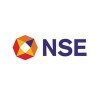Backup Administrator
20+ Backup Administrator Interview Questions and Answers

Asked in IBM

Q. What is the difference between NW9 and NW19 versions?
NW9 and NW19 are different versions of NetWorker software with varying features and capabilities.
NW19 has improved backup and recovery performance compared to NW9.
NW19 supports more operating systems and applications than NW9.
NW19 has enhanced security features such as TLS 1.2 support.
NW19 has a new web-based user interface for easier management.
NW19 has a new feature called CloudBoost for cloud-based data protection.
NW9 is an older version and may not be supported by newer h...read more

Asked in LTIMindtree

Q. what is your environment and which backups are taking?
Our environment consists of a mix of physical and virtual servers running on Windows and Linux platforms. We use a combination of full, incremental, and differential backups.
Environment includes physical and virtual servers
Operating systems used are Windows and Linux
Backup types used: full, incremental, differential

Asked in LTIMindtree

Q. Explain the primary function of a domain controller.
The primary function of the domain controller is to authenticate and authorize all users and computers in a Windows domain network.
Authenticating and authorizing users and computers in a Windows domain network
Managing security policies and access control
Maintaining Active Directory database
Enforcing security policies across the network

Asked in LTIMindtree

Q. Which databases are being backed up in Networker?
The databases that are taking backup in Networker include Oracle, SQL Server, MySQL, and MongoDB.
Oracle
SQL Server
MySQL
MongoDB

Asked in LTIMindtree

Q. How many types of queries does DNS use?
DNS can perform various types of queries including recursive, iterative, inverse, and dynamic updates.
DNS can perform recursive queries where it queries other servers on behalf of the client until it finds the answer.
Iterative queries involve the DNS server providing the best answer it can based on its own knowledge.
Inverse queries allow a DNS client to request the domain name associated with a specific IP address.
Dynamic updates enable DNS clients to update DNS records dynam...read more

Asked in LTIMindtree

Q. What does "tattooing" the registry mean?
Tattooing the registry refers to making permanent changes to the Windows registry that cannot be easily undone.
Tattooing the registry involves modifying critical system settings in the Windows registry.
These changes are typically irreversible and can have a significant impact on system performance and stability.
It is important to exercise caution when tattooing the registry as incorrect changes can lead to system errors or crashes.
Examples of tattooing the registry include ch...read more
Backup Administrator Jobs




Asked in Pierian Services

Q. How do you add a server to the commission and remove it from decommission?
Adding and removing servers involves updating backup configurations and ensuring data integrity.
1. **Add Server Commission**: Update backup software to include the new server's IP address and credentials.
2. **Configure Backup Schedule**: Set up a backup schedule for the new server, e.g., daily incremental backups.
3. **Test Backup**: Perform a test backup to ensure the new server is correctly integrated, e.g., verify data restoration.
4. **Remove Decommission**: Update backup s...read more

Asked in Zen & Art

Q. what is networker,disaster recovery.
Networker is a backup and recovery software used for disaster recovery.
Networker is a backup and recovery software developed by Dell EMC.
It is used to backup and restore data in case of disasters such as system crashes, hardware failures, or natural disasters.
It provides features like data deduplication, encryption, and compression to optimize backup and recovery processes.
Networker supports various platforms and applications including virtual environments, databases, and fil...read more
Share interview questions and help millions of jobseekers 🌟


Asked in National Stock Exchange of India

Q. What is a catalog backup and why is it important?
Catalogue backup is a process of backing up the metadata and information about the files and folders being backed up.
Catalogue backup includes information such as file names, sizes, types, and locations.
It is important for restoring data as it helps in identifying and locating specific files during the recovery process.
Catalogue backup can be done using specialized backup software that captures and stores this metadata.
Without a catalogue backup, restoring data can be more ti...read more

Asked in LTIMindtree

Q. Explain what IntelliMirror does.
Intellimirror is a feature in Windows Server that allows for centralized management of user desktop settings and files.
Intellimirror provides users with access to their desktop settings and files from any computer on the network.
It allows for automated backup and restoration of user data and settings.
Intellimirror can be used to deploy software applications to multiple computers in a network.
It helps in reducing IT support costs by enabling self-service troubleshooting and re...read more

Asked in LTIMindtree

Q. Explain what Windows Server is.
Windows Server is a group of operating systems designed by Microsoft for server use.
Windows Server is a group of operating systems developed by Microsoft.
It is specifically designed for use in server environments.
Windows Server provides features such as networking, storage, and virtualization capabilities.
Examples of Windows Server versions include Windows Server 2016 and Windows Server 2019.

Asked in Cloud4C

Q. What is the architecture of Commvault?
Commvault's architecture is a scalable, modular framework designed for data protection and management across diverse environments.
Commvault uses a client-server architecture, where clients (agents) communicate with a central server (CommServe).
The CommServe acts as the control center, managing backup policies, schedules, and reporting.
Media Agents handle the data transfer between clients and storage, optimizing performance and resource usage.
Storage can be on-premises, cloud-...read more

Asked in e-Labs InfoTech Private Limited

Q. What technologies have you worked with?
Technologies used in backup administration include backup software, storage devices, cloud storage, and disaster recovery solutions.
Backup software such as Veeam, Commvault, and Veritas NetBackup are commonly used in backup administration.
Storage devices like tape drives, disk arrays, and NAS systems are used to store backup data.
Cloud storage services like AWS S3, Azure Blob Storage, and Google Cloud Storage are increasingly being used for offsite backups.
Disaster recovery s...read more

Asked in Zen & Art

Q. configuration of modules and DB backups
Configuration of modules and DB backups is crucial for data protection and disaster recovery.
Regularly schedule backups of all modules and databases
Ensure backups are stored securely and offsite
Test backups regularly to ensure they can be restored successfully
Document backup and recovery procedures
Consider implementing automated backup solutions
Monitor backup logs for errors or failures

Asked in Pierian Services

Q. How do you add vSphere in Veeam?
Adding vSphere in Veeam involves configuring the vCenter server for backup and recovery tasks.
Open Veeam Backup & Replication console.
Navigate to 'Backup Infrastructure' and select 'Add Server'.
Choose 'VMware vSphere' from the options.
Enter the vCenter server details, including IP address and credentials.
Select the appropriate permissions for Veeam to access the vSphere environment.
Complete the wizard to finish adding the vSphere server.

Asked in Logix Infosecurity

Q. What failover and failback
Failover and failback are processes used in disaster recovery to switch from a primary system to a secondary system and then back again.
Failover is the process of automatically switching to a secondary system when the primary system fails.
Failback is the process of switching back to the primary system once it is restored.
Examples include using virtualization technology to failover to a backup server in case of hardware failure, and then failing back once the primary server is...read more

Asked in Clover Infotech

Q. What is disaster recovery?
Disaster recovery is the process of restoring data, applications, and systems after a disruptive event.
Involves creating a plan to recover from natural disasters, cyber attacks, hardware failures, etc.
Includes backup strategies, data replication, and testing procedures.
Goal is to minimize downtime and ensure business continuity.
Examples: restoring data from backups after a ransomware attack, switching to a secondary data center after a power outage.

Asked in Invesco

Q. Difference between hedge and mutual fund
Hedge funds are private investment funds with high risk and less regulation, while mutual funds are publicly traded and more regulated.
Hedge funds typically require high minimum investments, often $1 million or more, while mutual funds can be started with as little as $100.
Hedge funds employ various strategies, including short selling and leverage, whereas mutual funds usually invest in a diversified portfolio of stocks and bonds.
Hedge funds are less regulated and can take on...read more

Asked in Accenture

Q. What are your strengths?
My strengths include attention to detail, problem-solving skills, and strong communication abilities.
Attention to detail: I am meticulous in my work and always double-check my tasks to ensure accuracy.
Problem-solving skills: I am able to quickly identify issues and come up with effective solutions.
Strong communication abilities: I can effectively communicate with team members and stakeholders to ensure smooth operations.

Asked in Havells

Q. What is a catalog?
Catalog is a database that stores information about backup data.
Catalog is used to track backup data and its location.
It contains metadata about backup jobs, such as file names, sizes, and dates.
Catalog helps in restoring data quickly by providing information about the backup data.
It can be stored locally or remotely, depending on the backup solution.
Catalog can also be used for reporting and auditing purposes.

Asked in Invesco

Q. What is hedge fund
A hedge fund is an investment vehicle that pools capital from accredited investors to pursue diverse strategies for high returns.
Hedge funds often employ leverage to amplify returns.
They can invest in a wide range of assets, including stocks, bonds, and derivatives.
Hedge funds may use strategies like long/short equity, market neutral, or global macro.
Examples include Bridgewater Associates and Renaissance Technologies.

Asked in DXC Technology

Q. How do you restore files and folders?
Restoring files and folders involves retrieving lost or deleted data from backup systems.
Identify the backup source (e.g., cloud, local storage).
Select the specific files or folders to restore.
Use the backup software's restore function to initiate the process.
Verify the integrity of restored files to ensure they are complete.
Example: Restoring a deleted document from a cloud backup service.
Interview Questions of Similar Designations
Interview Experiences of Popular Companies








Reviews
Interviews
Salaries
Users

















